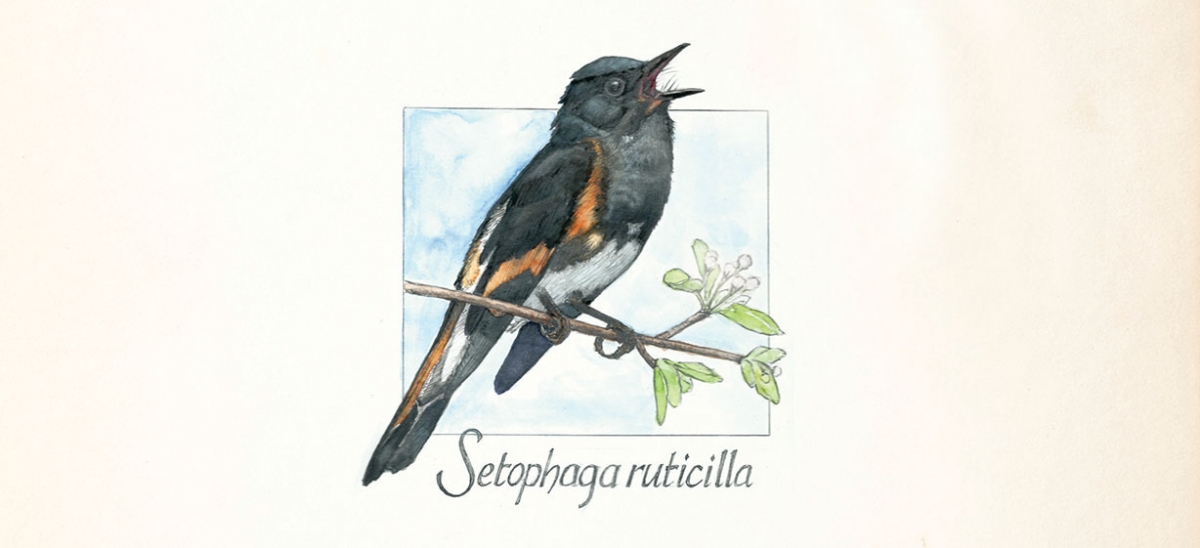American Redstart

Are we separate from nature or part of it? Superior to all creatures, the apex of creation, or simply one species among millions? Does self awareness make us unique? What about our sense of past, present and future?
These are some of the questions I’ve mulled since The Carnegie Museum of Natural History’s Powdermill Avian Research Center first gave me the chance to be a weekend ornithologist or, rather, keep company with ornithologists on the occasional weekend. By comparison to the serious science at Powdermill, I’m an avian dilettante. Still, I have curiosity and a desire to try new things, so back in 2003, I held my first wild bird at Powdermill, a female American Redstart.
Something at that moment hooked me. The bird’s eye was bright but dark, framed by a white eye ring against its gray head. She had a tinge of yellow beneath her wing, with tail feathers that were yellow along the edges, then dipped in black. Her breast was white and warm against my fingers, which also held her legs fast. My thumb, index, and middle fingers together with the bird, made a kind of gesture of blessing. But the blessing was from the bird to me. It was the redstart’s beating heart that gave it.
Though my description is sentimental, it’s accurate. The image of a small bird evinces pleasure. It seems we’re somehow biologically inclined toward the diminutive in the same way we are also awed by the power and strength of raptors. But it was pure wonder and delight with which I fixed that redstart, held the bird first in the “photographer’s grip,” then switched to the “bander’s grip,” her head carefully between my fingers, body engulfed in my palm.
American Redstarts are neotropical migrants, warblers more specifically, mating and nesting in our neck of the woods each spring and summer and winging their way south shortly thereafter, following insect abundance to warmer climes. They build cup nests of twigs and grasses in trees. The females tend to be dull, but the males are bold black with a red-orange-yellow breast, wing and tail feathers.
“My” redstart was a wild creature, an inhabitant of the air, making a brief terrestrial stop. And that is the wonder of living. We’re surrounded by millions of creatures large and small, the American Redstart among them, that carry on mostly without us. What if we could hold each one, just for an instant? Name them? Would we be again like Adam in the garden, creating the language of life as it paraded before us? Or does language separate us from the original experience of being?
The American Redstart I held had been banded, wing-measured, weighed and aged. I took her out of Powdermill’s lab, stood in the bright summer sun with her close to my face. I have a photo of the moment, the bird like some celebrity I’ve sidled up to, the picture proof of my brush with fame. But the best part was letting her go and seeing her disappear.
Powdermill Nature Reserve, the environmental research center of Carnegie Museum of Natural History, has been dedicated to its mission of research, education, and conservation for more than 50 years. Learn more at www.carnegiemnh.org/powdermill.


